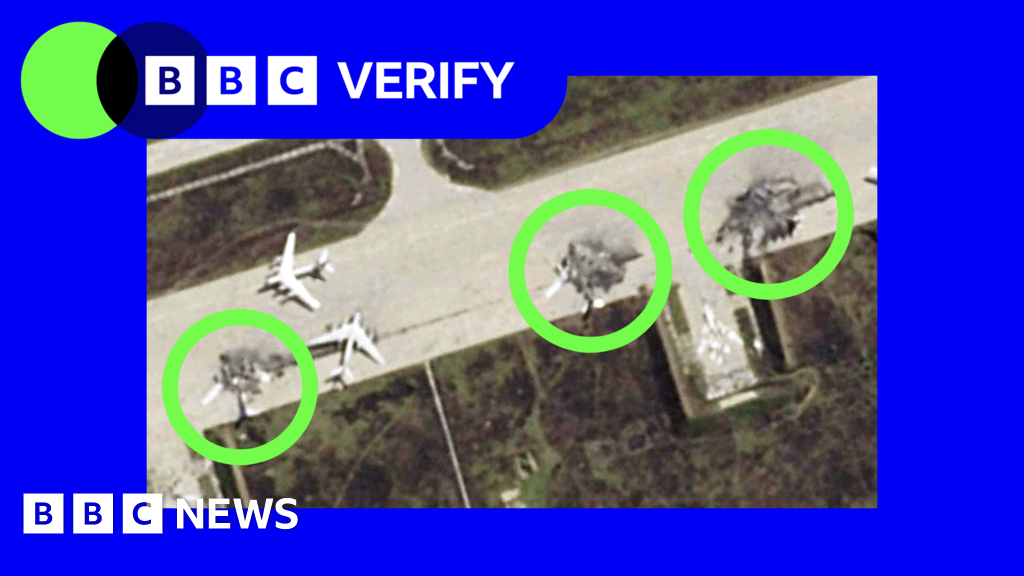- Green
New German leader Merz is meeting with Trump in Washington
时间:2010-12-5 17:23:32 作者:Explainers 来源:Future 查看: 评论:0内容摘要:They are carnivores that slurp up earthworms like noodles, and are some of the world’s largest snails , with oversized, distinctive shells in a range of rich earth colors and swirling patterns.They are carnivores that slurp up earthworms like noodles, and are some of the world’s largest snails , with oversized, distinctive shells in a range of rich earth colors and swirling patterns.
AP video reporter Rafał Niedzielski contributed to this report.KYIV, Ukraine (AP) — Russia struck civilian areas of Ukraine with drones in another deadly nighttime attack, officials said Tuesday, as Kyiv officials dismissed Russian President Vladimir Putin’s

next week as an attempt “to deceive the United States.”The Russian attack damaged homes in Ukraine’s southeastern Dnipropetrovsk region, authorities said, killing a 12-year-old girl and wounding three others, including a six-year-old.Russia also launched 20 drones and 31 powerful guided bombs at Kharkiv, the second-largest Ukrainian city. Debris from an intercepted Russian drone started a fire in a neighborhood of the capital, Kyiv, according to officials.

Putin announced Monday the temporary ceasefire. However, he hasn’t offered details on how the truce, which will start May 8 and last through the end of May 10, would be monitored. It marks Moscow’s defeat of Nazi Germany in 1945, known as Victory Day, and comes more than three years afterRussia has effectively rejected a U.S. proposal for an immediate and full 30-day halt in the fighting by imposing far-reaching conditions. Ukraine has accepted it, according to Ukrainian President Volodymyr Zelenskyy.

Kyiv is keen to lock in crucial U.S. military aid for the war, amid doubts about
if Washington walks away.In 2023, Stats NZ, a government agency, said New Zealand in 2022 dipped below five sheep per person for the first time. The national flock had lost a million more sheep in Tuesday’s figures, which recorded livestock numbers as of June 2024.
Toby Williams, a spokesperson for sector lobby group Federated Farmers, said sheep farmers have switched to more lucrative pursuits — dairy, or the conversion of land from farming to pine forestry“If I’m really honest, the wool industry is almost at that tipping point, if not already there, of not having a wool industry anymore,” he said.
The government has drawn up measures intended to slow the decline, including an announcement in 2024 that they will place limits on the scale of farmland that can be converted to carbon forestry.New government procurement guidelines launched in April urge the use of New Zealand wool products — such as carpets and insulation — in newly constructed or refurbished public buildings. But those measures are not expected to halt declining sheep numbers.
- 最近更新
- 2025-07-07 11:33:14Dozens killed in Russian attacks on Ukraine, Dnipro worst hit
- 2025-07-07 11:33:14Iranian paramilitaries go on the hunt for Mossad agents
- 2025-07-07 11:33:14Gulf state hosts largest US military base in the Middle East
- 2025-07-07 11:33:14Leaders risk getting into shouting match with Donald Trump over increased defence spending
- 2025-07-07 11:33:14US judge allows company to train AI using copyrighted literary materials
- 2025-07-07 11:33:14OpenAI and Jony Ive accused of trying to ‘bury’ rival start-up
- 2025-07-07 11:33:14Europe should not go it alone on defence
- 2025-07-07 11:33:14Greece probes Azerbaijani arrested for espionage for links to Iran
- 热门排行
- 2025-07-07 11:33:14High-yield savings accounts, money market accounts
- 2025-07-07 11:33:14Photos of the escalating Israel-Iran conflict
- 2025-07-07 11:33:14throwing food out left and right
- 2025-07-07 11:33:14The struggle to get inside how AI models really work
- 2025-07-07 11:33:14Portable Air Conditioner 8,000 BTU
- 2025-07-07 11:33:14Trump: no ‘regime change’ in Iran, urges calm after strikes
- 2025-07-07 11:33:14AOLThe 44 best early Prime Day deals this weekend
- 2025-07-07 11:33:14Trump signals sanctions relief for China to buy Iran’s oil
- 友情链接
- Authorities determine the cause of death of a man whose burned body was found on Stone Mountain UK backs Morocco's plan in disputed Western Sahara Alcaraz gives point to Shelton on racket fling Ser católico en una universidad secular puede ser un desafío; otros lo ven como una bendición Authorities determine the cause of death of a man whose burned body was found on Stone Mountain Alcaraz gives point to Shelton on racket fling Serbia's protesting students rally nationwide, putting pressure on Vucic to call early elections Alcaraz gives point to Shelton on racket fling Death toll reaches at least 200 in Nigerian town submerged in floods Ser católico en una universidad secular puede ser un desafío; otros lo ven como una bendición Alcaraz gives point to Shelton on racket fling Serbia's protesting students rally nationwide, putting pressure on Vucic to call early elections Alcaraz gives point to Shelton on racket fling Serbia's protesting students rally nationwide, putting pressure on Vucic to call early elections Death toll reaches at least 200 in Nigerian town submerged in floods UK backs Morocco's plan in disputed Western Sahara UK backs Morocco's plan in disputed Western Sahara Death toll reaches at least 200 in Nigerian town submerged in floods Death toll reaches at least 200 in Nigerian town submerged in floods Alcaraz gives point to Shelton on racket fling Death toll reaches at least 200 in Nigerian town submerged in floods Death toll reaches at least 200 in Nigerian town submerged in floods Death toll reaches at least 200 in Nigerian town submerged in floods UK backs Morocco's plan in disputed Western Sahara Alcaraz gives point to Shelton on racket fling Authorities determine the cause of death of a man whose burned body was found on Stone Mountain Authorities determine the cause of death of a man whose burned body was found on Stone Mountain Alcaraz gives point to Shelton on racket fling Serbia's protesting students rally nationwide, putting pressure on Vucic to call early elections Ser católico en una universidad secular puede ser un desafío; otros lo ven como una bendición
